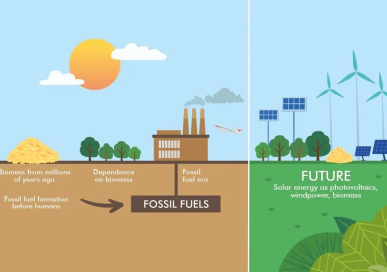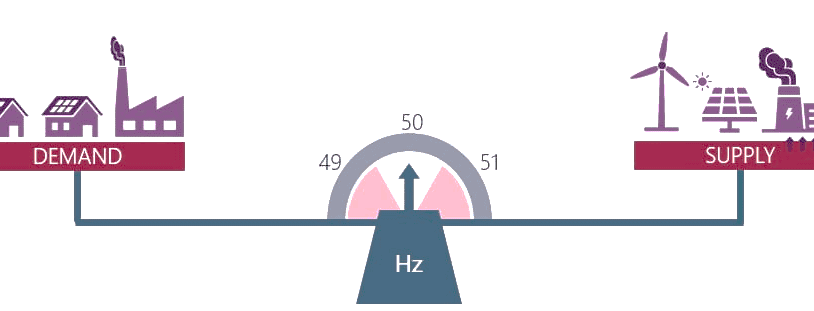Introduction
With rising environmental concerns and the urge to add sustainability, integrating renewable energy sources into the power grid holds immense promise. However, there are some challenges that need to be overcome.
Role of Renewable Energy Sources in the Power Grid
Renewable energy sources, like wind and solar power, are pivotal in reducing the reliance on fossil fuels in the power grid, thereby mitigating environmental impacts. By feeding clean, green power into the grid, renewables also diversify and secure our energy resources.
Importance of Integrating Renewables for a Sustainable Future
The integration of renewables into the power grid isn’t just a technical upgrade; it’s a bold stride toward sustainable energy for future generations. Despite the challenges of incorporating variable renewables into traditional grids, the opportunities and benefits this transition presents are substantial, paving the way for a low-carbon, resilient energy system. [1][2][3][4]

Challenges in Integrating Renewable Energy Sources
The integration of renewable energy into the power grid is not without its challenges.
Variability and Intermittency of Renewable Energy Generation
One of the most significant obstacles is the variability and intermittency of renewable power. Unlike fossil fuels which can provide steady power, renewable sources like solar and wind are not consistently available, posing a challenge in managing and balancing energy generation and demand.
Grid Stability and Balancing Supply and Demand
Ensuring grid stability is another critical issue. Current power grids were not designed to harness fluctuating renewable energy sources. Maintaining stable and reliable power supply while integrating volatile renewable sources requires innovative solutions and significant grid upgrades.

Solutions for Overcoming Challenges
Incorporating renewable energy resources into the power grid undeniably presents some complex challenges. However, innovative solutions are emerging to overcome these obstacles, unlocking incredible opportunities for sustainable energy generation and consumption.
1. Energy Storage Technologies for Tackling Variability Issues
To counter the reliability issues, energy storage technologies like lithium-ion batteries and pumped hydroelectric storage solutions are gaining momentum. These technologies store surplus energy generated during favorable conditions, hence, making it available during periods of low generation or high demand.
2. Advanced Grid Management Systems for Efficient Integration
Smart grid technologies are another solution for efficient integration of variable renewable sources. These systems use advanced communication and automation technologies to predict and manage power fluctuations, promoting seamless grid stability and robust reliability.

Opportunities in Integrating Renewable Energy Sources
While integrating renewable energy sources into the power grid comes with challenges, it also opens a myriad of opportunities.
1. Economic Benefits and Job Creation
Shifting to renewable energy presents significant economic opportunities. It not only boosts local economies by creating jobs but also reduces reliance on costly energy imports. As the demand for clean energy grows, so does the need for skilled professionals in the sector.
2. Reduction of Greenhouse Gas Emissions and Environmental Advantages
Renewable energy is environmentally friendly, producing little to no greenhouse gas emissions. By transitioning to renewables, we tackle major environmental issues like air pollution, reducing the impacts of climate change and promoting healthier living conditions for all. [11][12]

Case Studies and Success Stories
As we explore the opportunities involving the integration of renewable energy sources into the power grid, it’s important to look at successful case studies.
1. Examples of Successful Integration of Renewable Energy in Power Grids
Germany serves as a great example of successful integration. The country has managed to incorporate a significant amount of wind and solar power into its grid. Another shining example is Denmark, which has successfully integrated enough wind power to occasionally meet 100% of its electricity demand.
2. Lessons Learned and Best Practices from These Case Studies
These success stories teach us that integrating renewable energy requires forward-thinking strategies and robust infrastructure. Best practices include consistent policy support, grid management techniques, and the strategic placement of renewable technologies. By learning from these examples, other regions can move towards a more sustainable future. [13][14][15][16]
Conclusion
In wrapping up, it’s crucial to acknowledge the significant challenges in integrating renewable energy into the power grid, such as grid stability, storage capacity, and investment costs. However, with these challenges come opportunities. Drawing on lessons learned from successful cases like Germany and Denmark, we can develop solutions like forward-thinking strategies, robust infrastructure, consistent policy support, and strategic technological placement. The journey is complex but the benefits of a sustainable future make it well worthwhile.
